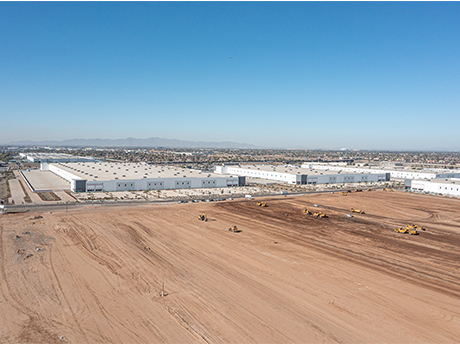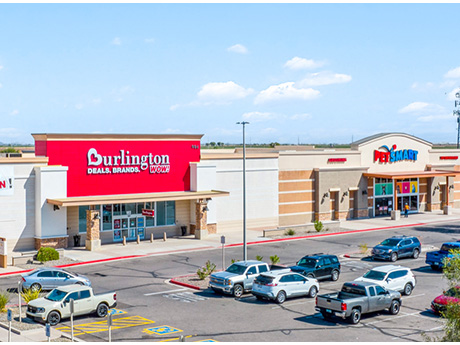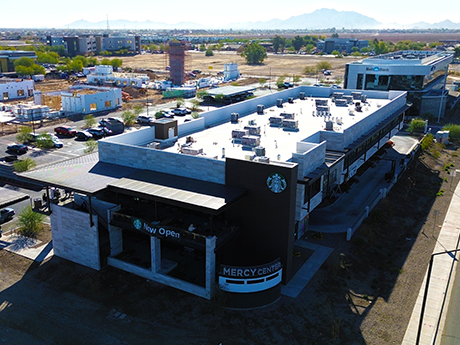— By Nick Krakower and James deRegt of SRS Real Estate Partners — The fourth quarter of 2024 revealed significant trends across key indicators in Orange County’s industrial market. For starters, the county’s industrial market vacancy rate was 3.9 percent at that time. This figure represents a continued trend of gradually increasing vacancies, which has consistently occurred over the past eight quarters. The uptick in vacancies can be attributed to increased availability in larger distribution centers and evolving tenant requirements. North County had the largest increase at 4.5 percent. While a 3.9 percent vacancy shows OC’s industrial market remains relatively tight, there is a countywide availability of more than 16 million square feet. Net absorption for the quarter came in at -900,000 square feet. Sectors that rely heavily on logistics and distribution were most impacted, as the move to less expensive space in the Inland Empire continues. Despite the negative figure, leasing activity remains high with quarterly averages of more than 2 million square feet. Net absorption is expected to stabilize with the development pipeline slowing down. Development activity remained strong with 2 million square feet of new industrial space in the pipeline. This new inventory focuses on state-of-the-art facilities designed to …
Western Market Reports
— Phillip Hernandez, Research Director, Colliers — The Phoenix industrial market showed resilience throughout 2024. Arizona ranked fifth in net migration as of October, with 62,533 new residents — 52.8 percent of whom relocated from California. This influx of residents has positively impacted the labor market, growing Phoenix’s workforce by 42,900 employees by November, a 1.7 percent increase from the previous year. Investor interest in Phoenix’s industrial sector also remains strong. Fourth-quarter sales volume reached $1.9 billion, a 74 percent increase compared to the previous quarter and a 91.8 percent year-over-year increase. This brought last year’s total sales volume to $4.3 billion, with average prices per square foot rising by 2 percent (to $204.20) compared to fourth-quarter 2023. Vacancy Trends and Absorption Despite strong investor activity, the Phoenix market is experiencing rising vacancy rates. New deliveries in the fourth quarter added 7.8 million square feet to the market, bringing total deliveries for 2024 to 34.8 million square feet. However, the vacancy rate increased to 10.6 percent, marking a year-over-year 390 basis points rise. This increase is largely attributed to the completion of vacant product. Net absorption reached 3.8 million square feet in the fourth quarter, contributing to a year-to-date total of …
— Dave Carder, Senior Vice President, Kidder Mathews — The state of Phoenix’s office market is not easily summed up with a catchy headline or a few brief bullet points. Along with most large metropolitan areas across the country, Phoenix has struggled with lower demand, rising vacancies and a shift toward hybrid workweeks. However, several emerging trends are creating positive shifts in the market that should be noted as we look to 2025 and beyond. The average vacancy rate of the Phoenix office market over the past decade was 18.5 percent. That includes a low of 13.9 percent in 2019 and a high of 24.8 percent in 2024. Gross leasing absorption averaged nearly 7 million square feet annually, with a high of nearly 7.9 million square feet in 2019 and a low of 5.5 million square feet last year. Net leasing absorption showed a similar pattern, peaking at 3.1 million square feet in 2019 and declining to negative 2.2 million square feet in 2024. These trends point to 2019 being the market’s best-performing pre-pandemic year across all three metrics. Despite 2024’s gross leasing absorption (5.5 million square feet) being close to the 10-year average, the significant rise in vacancy and …
— By Sebastian Bernt and Erick Parulan of Avison Young — The Orange County office market continues to show resilience, particularly compared to urban centers like Downtown Los Angeles. Its suburban environment, coupled with higher office utilization rates, has made it an attractive option for businesses adapting to evolving workplace strategies. As a result, leasing activity has remained steady with availability stabilizing and tenant demand holding firm. Total leasing volume reached 1.6 million square feet in the fourth quarter of 2024, bringing the annual total to 7.8 million square feet. Notable transactions included Willow Laboratories, which signed a 63,440-square-foot lease at 121 Theory Drive in Irvine, and Acrisure, which secured 59,409 square feet at 611 Anton Blvd in Costa Mesa. While leasing slowed slightly in the fourth quarter, demand for modern, amenity-rich office spaces remained strong as companies continued implementing return-to-office strategies. This demand has pushed average asking lease rates to $35.05 per square foot, reflecting a broader shift toward high-quality, collaborative work environments that prioritize employee engagement and workplace experience. Orange County’s growing residential appeal has further fueled office demand as young professionals and families increasingly opt for a suburban lifestyle. As a result, companies are prioritizing locations with …
— By John K. Jackson of Colliers Phoenix — Casa Grande, Ariz., stands at a pivotal juncture that could see it transition into a Tier II retail market this year. Phoenix’s Greater Metropolitan Area has been characterized by historically low retail vacancy rates, prompting retailers and developers to explore opportunities outside the urban core. Casa Grande’s strategic location less than 50 miles south of Phoenix Sky Harbor International Airport makes it well-positioned to capitalize on this migration. The Dynamics of Casa Grande’s Growth Casa Grande has experienced notable growth in recent years. It was the seventh fastest-growing U.S. city in 2021, experiencing a remarkable 24 percent population increase since 2016. This growth, paired with job creation across sectors, is attracting major employers, including Lucid, LG Energy Solution and Kohler. These three firms promise to collectively bring more than 6,400 jobs to the area. Such economic development lays a solid foundation for retail expansion. After all, a growing workforce typically leads to increased consumer demand. The significant investments being made in the area further bolster Casa Grande’s potential as a retail hub. Lucid has recently expanded its manufacturing complex to 4 million square feet, with plans for additional land acquisition to support …
— Scott Hintze and Marti Weinstein of Diversified Partners Commercial Real Estate — Phoenix’s retail development market is seeing a surge in optimism as the city benefits from a growing economy and a shift in political leadership. With the new administration coming into power, the outlook for the Phoenix retail market has become increasingly positive, promising a wave of new projects and investment opportunities in the coming years. The city’s rapid population growth, expanding infrastructure and bustling job market have positioned Phoenix as one of the most attractive cities in the U.S. for retail development. The new administration has brought a renewed focus on urban development, job creation and business-friendly policies, which is expected to help stimulate both demand for retail spaces and the construction of new commercial properties. Government support, including incentives for developers and tax breaks for businesses, is anticipated to foster a thriving retail sector that will benefit both local residents and national retailers looking to expand into the area. Several projects we have been working on have seen unprecedented demand from tenants. We recently completed a 25,000-square-foot building across from Gilbert Mercy Hospital that includes a two-story Starbucks, the first in the market. In addition to …
— By Brett Polachek of Newmark — Phoenix’s multifamily market experienced dynamic shifts in 2024, driven by strong population growth, economic expansion and single-family cost of ownership. Phoenix remains a top relocation destination, with a population growth rate of 1.8 percent (+85,000 residents), nearly double the national average of 0.98 percent. This influx is supported by the addition of more than 52,000 jobs from October 2023 to October 2024. Phoenix also has the fifth healthiest rent-to-income ratio among 30 major U.S. markets that we sampled. Demand for multifamily housing reached record levels, with 14,528 units absorbed annually, marking the strongest performance since 1994. The supply experienced an annual increase of 6.4 percent as 19,835 units delivered last year. The far West Valley submarkets of Avondale, Goodyear and West Glendale led supply growth, adding 6,100 units to their inventory. The market showed resilience despite this historic supply wave. Occupancy rose 1 percent year over year to 93.7 percent, while Class B units clocked in a 94 percent occupancy rate. This was followed by Class A at 93.8 percent and Class C at 93.2 percent. These figures remain slightly below pre-pandemic levels, but they reflect a strong recovery trajectory. Asking rents in …
— By Giovanna Abraham, Market Intelligence Analyst, Avison Young — The Las Vegas office market continues to defy broader national trends, maintaining resilience and attracting attention for its stability and growth. While many U.S. cities struggle with rising office vacancies, Las Vegas stands out for its comparatively low vacancy rate, steady rent growth and positive return-to-office trends. Despite recent increases in vacancy, Las Vegas remains well below national averages, with a vacancy rate of 15.2 percent in the third quarter — 850 basis points lower than the national availability rate of 23.7 percent. This performance reflects the unique dynamics shaping the Las Vegas office market, including a steadily growing population and the city’s appeal as a business-friendly destination. Low Vacancy Rates and a Stable MarketOffice vacancy has gradually increased over the past six quarters, but Las Vegas has also experienced a much slower rise than many larger metropolitan markets. This measured growth has allowed the city to remain competitive, with vacancies rebounding to pre-pandemic levels by late 2021 and holding steady through first-quarter 2023. After brief upticks in the first half of 2024, the vacancy rate declined again by third-quarter 2024, dropping from 15.9 percent to 15.2 percent. This resilience …
— By Roy Fritz, First Vice President, CBRE Retail Investment Properties – West — Las Vegas’s retail investment market continues to hit the jackpot, mirroring the lucky winners that visit the city every week. The Valley remains a magnet for growth, attracting new investors who would never have considered Las Vegas in the past. High-profile recent additions like the state-of-the-art, 70,000-seat Allegiant Stadium, Formula 1 Las Vegas Grand Prix race, MSG Sphere and the Fontainebleau luxury resort and casino have retailers and investors drawn to the city’s bright lights as they seek out that next big win. Major League Baseball is also making its mark in Las Vegas with the Oakland Athletics’ planned move to the city. The new stadium, set to open in 2028, will feature a 33,000-seat capacity and state-of-the-art amenities. It will also further cement Las Vegas as a premier sports and entertainment destination. This growth is supported by strong underlying fundamentals and economic diversification. The sentiment across the Valley’s business landscape is that the area has clearly transitioned from a tertiary market, which was highly dependent on Southern California capital just a few years ago, to a solid secondary market. This transformation has attracted investments from all …
— By Amy Ogden, Partner, Industrial, LOGIC Commercial Real Estate — With the presidential election barely in our rearview mirror, many are taking a moment to assess how the outcome might impact (positively or negatively) their operations. On the one hand, this has been a resilient year for Las Vegas’ industrial market, which tracked close to 4.5 million square feet of net absorption. On the other hand, we are beginning to see a slowdown in momentum. The uncertainty of potential changes has left decision-makers hesitant, preferring to avoid any premature moves until after the holiday season. Nevertheless, the market is far from idle. The recent rate cut of 50 basis points, along with expectations of an additional reduction at the upcoming November meeting , has set a quiet hum of activity in motion. Investors and key players are discreetly exploring opportunities, positioning themselves strategically for when the time is right to act. Local industrial vacancy rates have also jump to about 7 percent as an influx of new deliveries come online. Vacancy rates are projected to hit double digits, considering an additional 4 million square feet is expected to deliver by year’s end. This is something we haven’t seen within …





